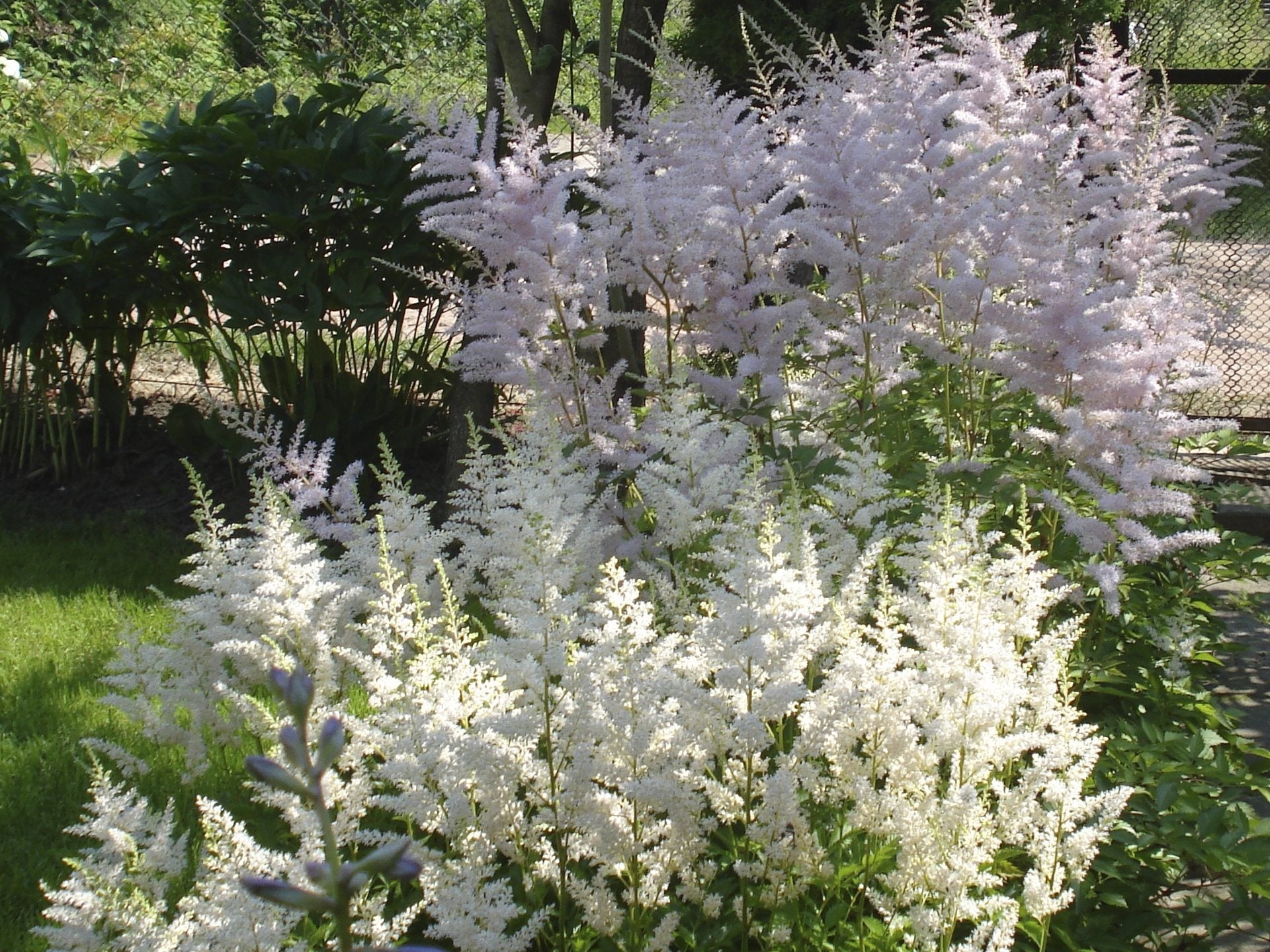Best Astilbe Varieties – Types Of Astilbe Good For Planting In Gardens


There are many types of astilbe from which to choose. Noted for their finely dissected foliage and airy plumes, these shade lovers brighten any dark area of the garden and are notably easy to grow and cultivate. Among the many astilbe plant varieties are those with flowers of red, white, pink, or lavender, but also different tones of foliar color. Peruse any plant catalogue and you will find astilbe varieties for almost any taste. Pay attention to the planting zone, as some astilbe plants are hardier than others.
Choosing Your Astilbe Varieties
I have a deep affection for astilbes. They provide me with a nearly foolproof solution for the shady and low-light areas of my garden. As an added bonus, there are many astilbe plant varieties from which to choose. Foliage hues range from bronze to deep green and even reddish tones. The size and hardiness of some of the cultivars are also broad enough to suit most gardeners' needs. If you want plants in containers, the dwarf specimens might be the right fit. Also, smaller planting spaces and borders benefit from the 1 to 2 foot (31-61 cm.) diminutive varieties. A truly compelling garden of feathery foliage and tall plumes results from the use of the larger specimens. Remember that the plants need some horizontal space for the delicate foliage. Provide at least 16 inches (41 cm.) between rhizomes at planting. Most astilbe plants are hardy in United States Department of Agriculture zones 4 to 9, but a few are only hardy in zones 5 to 8. Northern gardeners will need to pay attention to the zone in order to ensure plants can withstand their cold periods.
Dwarf Varieties of Astilbe
The smaller varieties of astilbe make elegant borders when massed along the edges of your garden beds. Most of these achieve 1.5 to 2 feet (46-61 cm.) in height with a similar spread. 'Sprite' is an award-winning dwarf that tops out at 10 inches (25 cm.) and is a charming, vigorous, pink variety with bronze foliage. The dwarf family of astilbe, or chinensis, seems to have more drought tolerance than full-sized forms. Some cultivars to try for smaller areas or low-profile plants might be 'Visions,' ' Pumila,' or 'Hennie Graafland.' 'Pumila is on the smaller side at 12 inches (31 cm.) with lovely purple flower spikes. If you want dark mauve blooms, 'Pumila' will deliver, while 'Hennie Graafland' is on the edge of the dwarf category, producing 16 inch (41 cm.) tall, bright pink blooms and deep green leaves. Other forms for the smaller perennial bed might be 'Irrlicht' or the violet-pink 'Gloria Purpurea.' These smaller forms of astilbe are useful where shorter plants are desired but still have all the endearing qualities of the full-sized specimens.
Types of Astilbe for Maximum Impact
The larger types of astilbe provide real punch in the perennial shade garden. Some of the tallest cultivars available are nearly 5 feet (1.5 m.) tall at maturity. 'Purple Blaze' and 'Purple Candles' are two of these towering specimens, which are widely available and have deep purple to violet-pink blooms. Slightly shorter but no less impactful forms range from 2 to 3 feet (0.5 to 1 m.) in height. These are the most common cultivars with flower colors of intense red, salmon, rose, lilac, and even white.
- A classic white form is 'Snowdrift,' with pure white blooms from June to July on 2 foot (61 cm.) tall stems. If you want a slightly taller white bloomer, try 'White Glory,' a plant that may achieve 3 feet (1 m.) in height, or 'Bridal Veil' with its striking bronze leaves.
- Peach to salmon tones are found in 'Bressingham Beauty,' 'Peach Blossom,' 'Anite Pfeifer,' and 'Grete Pungel.'
- The classic pink tones show well with either green or bronze foliage and are probably the most commonly found of the different kinds of astilbe. There are many types readily available at your local nursery.
- Purple and red forms are a bit harder to find, but 'Granat,' 'Glow,' and 'Spartan' are good deep red choices with excellent hardiness. More unusual still are the purple to lavender cultivars. Look for 'Hyacinth' or 'Mars' at your garden centers.
Every year new forms are introduced. Have some fun perusing the different varieties and decorate your landscape with these easy-to-grow plants with oodles of charm.
Sign up for the Gardening Know How newsletter today and receive a free copy of our e-book "How to Grow Delicious Tomatoes".

Bonnie Grant is a professional landscaper with a Certification in Urban Gardening. She has been gardening and writing for 15 years. A former professional chef, she has a passion for edible landscaping.